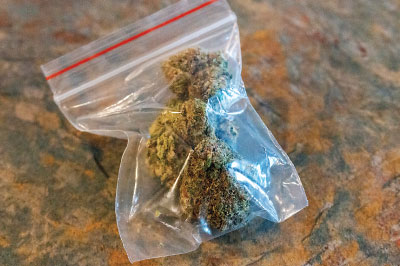Law enforcement confiscation of illegal drugs dipped early in the COVID-19 pandemic, then began to rise, according to a study in Drug and Alcohol Dependence. These changes were most pronounced for marijuana and methamphetamine, where seizures of these drugs exceeded pre-COVID-19 numbers in August of last year.
“While drug seizures aren’t a great indicator of drug use, they can serve as an indicator for drug availability,” said lead author Joseph J. Palamar, Ph.D., M.P.H., an associate professor in the Department of Population Health at New York University Langone Medical Center.
Palamar and colleagues analyzed law enforcement seizures of illegal drugs in five key regions in the Office of National Drug Control Policy’s High Intensity Drug Trafficking Areas Program: Chicago, Ohio, New Mexico, North Florida, and Washington, D.C./Baltimore. They examined monthly seizure trends in confiscations of cocaine, fentanyl, heroin, marijuana, and methamphetamine from March 2019 (one year before the COVID-19 pandemic) to September 2020.
The overall number of seizures was less in April 2020 compared with March 2019, and then began to climb. In August 2020, there were 2,088 drug confiscations overall compared with 1,777 in June 2019, the peak of pre-pandemic seizures.
“I wasn’t surprised that the number of seizures decreased early in the pandemic, but I was a bit surprised that seizures in late summer of 2020 surpassed peaks in 2019,” Palamar told Psychiatric News. “It makes me wonder whether drug availability has really increased that much or if law enforcement merely caught up from [re]laxed activity earlier in the pandemic.”
Marijuana and methamphetamine seizures drove the overall increase in drug confiscations. Marijuana confiscations climbed to 665 in August 2020, compared with a pre-pandemic high of 614 in March 2019. Law enforcement seized 11,194 kg of marijuana in August 2020, compared with the highest pre-COVID weight of 4,744 kg in December 2019. Methamphetamine seizures also increased after an initial decline early in the pandemic. In August 2020 there were 476 methamphetamine confiscations, compared with 385 in June 2019. However, the weight of methamphetamine seized did not significantly change. Before the pandemic hit, marijuana and methamphetamine confiscations had been declining, but the rebound in confiscations of both drugs in the summer of 2020 were enough to derail the downward trend.
Fentanyl seizures dipped in April 2020 and then rebounded. However, the April decline was not enough to disrupt an overall upward trend in confiscations from the beginning of the study, leading the researchers to conclude that fentanyl confiscations have increased over time. Cocaine and heroin seizures dipped at the start of the pandemic and then rebounded, but confiscations of both drugs declined over time.
Palamar emphasized that drug confiscations should not be considered an indication of illicit drug use. However, some of the data in this study may dovetail with those of studies that track use.
“Some studies suggest that a lot of people who already used marijuana increased use during the pandemic. If this is the case, then there may be higher demand, even if the increase in demand is based on the same people who [used marijuana before the pandemic],” he said. “Methamphetamine use has [also] been increasing again in recent years, especially among people who use heroin.”
This study was supported by the National Institute on Drug Abuse. ■
“Shifts in Drug Seizures in the United States During the COVID-19 Pandemic” is posted
here.


